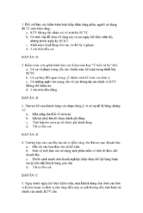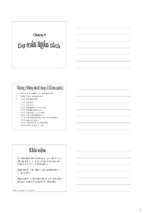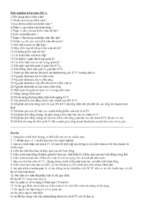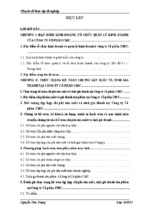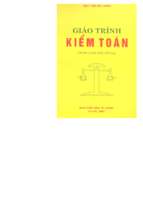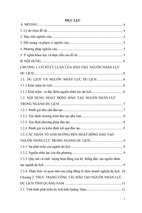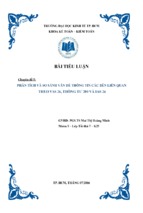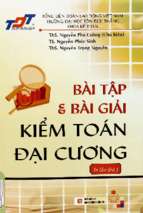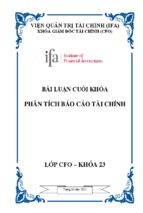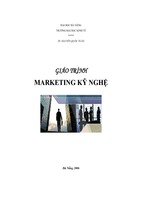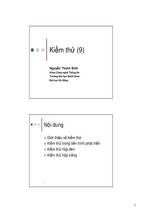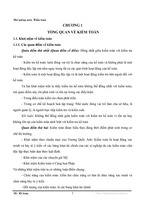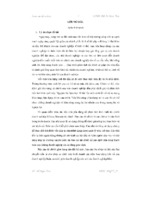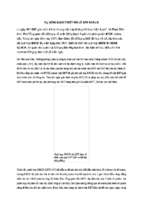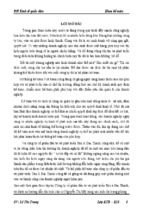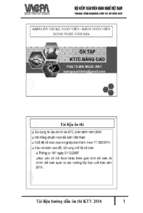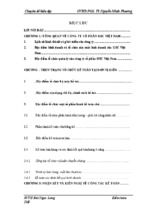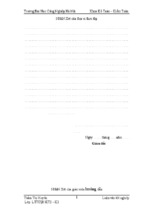AUDITING
and Assurance Services
An Integrated Approach
14**> C«J‘t*on
Th is eBook is provided by
www.PlentyofeBooks.net
Plenty of eBooks is a blog with an aim of
helping people, especially student , who cannot
afford to buy some costly books
from the market.
For more Free eBooks and educational
material visit
www.PlentyofeBooks.net
ARENS ELDER BEASLEY
Summary of the Audit Process
Accept client and perform
initial planning
PHASE I
Plan and design an
audit approach
l
Understand the client's
business and industry
I
Assess client business risk
l
Perform preliminary
analytical procedures
l
Set materiality and assess
acceptable audit risk and
inherent risk
I
Understand internal control
and assess control risk
l
Gather information
to assess fraud risks
l
Develop overall audit plan
and audit program
PHASE II
Perform tests of
controls and
substantive tests
of transactions
No
Perform tests of controls*
I
Perform substantive tests
of transactions
l
Assess likelihood of misstatements
in financial statements
PHASE III
Perform analytical
procedures and
tests of details of
balances
PHASE IV
Complete the
audit and
issue an audit
report
High or
n noWn
Perform analytical procedures
Perform tests of key items
Perform additional tests
of details of balances
Low
Medium
U k
Perform additional tests for
presentation and disclosure
I
Accumulate final evidence
l
Evaluate results
I
Issue audit report
l
Communicate with audit
committee and management
*The extent of testing of controls is determined by planned reliance on controls. For public
companies required to have an audit of internal control, testing must be sufficient to issue an
opinion on internal control over financial reporting.
FOURTEENTH EDITION
AUDITING
AND
ASSURANCE
SERVICES
AN INTEGRATED APPROACH
Includes coverage of international standards and global auditing issues, in addition to coverage of
PCAOB Auditing Standards, the risk assessment SASs, the Sarbanes-Oxley Act, and Section 404 audits.
ALVIN A. ARENS
Apago P D F Enhancer
PricewaterhouseCoopers
Emeritus Professor
Michigan State University
RANDAL J. ELDER
Syracuse University
MARK S. BEASLEY
North Carolina State University Deloitte Professor of
Enterprise Risk Management
Prentice Hall
Boston Columbus Indianapolis New York San Francisco Upper Saddle River
Amsterdam Cape Town Dubai London Madrid Milan Munich Paris Montreal Toronto
Delhi Mexico City Sao Paulo Sydney Hong Kong Seoul Singapore Taipei Tokyo
A TRIBUTE TO
ALVIN A. ARENS
Library of Congress Cataloging-in-Publication Information is available.
Arens, Alvin A.
Auditing and assurance services: an integrated approach/
Alvin A. Arens, Randal J. Elder, Mark S. Beasley.—14th ed.
p. cm.
Includes index.
ISBN-13: 978-0-13-257595-9 ISBN-10: 0-13-257595-7
1. Auditing. I. Elder, Randal J. II. Beasley, Mark S. III. Title.
VP/Editorial Director: Sally Yagan
Editor in Chief: Donna Battista
Executive Editor: Stephanie Wall
Product Development Manager: Ashley Santora
Editorial Project Manager: Christina Rumbaugh
Editorial Assistant: Brian Reilly
Director of Marketing: Patrice Lumumba Jones
Marketing Assistant: Ian Gold
Senior Managing Editor: Cynthia Zonneveld
Production Project Manager: Carol O’Rourke
Senior Operations Manager: Diane Peirano
Art Director: Anthony Gemmellaro
Interior Design: Lisa Delgado & Co.
Cover Design: Anthony Gemmellaro
Composition: Lynne Wood
Printer/Binder: Quebecor World Color/Versailles
Typeface: 11/12.5 Minion Regular
Apago
The auditing profession and audit education lost a great friend,
mentor, and leader with the passing of Alvin A. Arens in December
2010. Al’s leadership at national and international levels and his
commitment to expanding knowledge through the development of
educational materials, resources, articles, and cases profoundly
impacted students and professionals in auditing.
As founding author of Auditing and Assurance Services: An Integrated
Approach, he has shaped classroom instruction and student learning
about auditing concepts and their practical implementation around
the world. Since the first edition was published in 1976, his textbook
has impacted audit education for over 30 years in the U.S. and
globally, including six different language translations of the most
recent edition.
A1 Enhancer
PDF was the PricewaterhouseCoopers Auditing Professor and member of
the Accounting & Information Systems faculty in the Eli Broad College
Credits and acknowledgments borrowed from other sources and reproduced, with
Apa of Businessat MichiganState University from 1968 through 2007.
permission, in this textbook appear on appropriate page within text.
Among his many honors, Al was selected as one of five national auditing educators to hold the first Price
Waterhouse Auditing professorships, was honored as AICPA Educator of the Year, served on the AICPA’s
Auditing Standards Board, and was President of the American Accounting Association. Al taught accounting,
mainly auditing, 2008, a passion that is legendary. He had a heart for
Copyright © 2012, 2010,with 2006, 2005 by Pearson Education, Inc., Upper Saddle River, sharing his knowledge of auditing with the
New Jersey, 07458. Pearsonprofessionals.rights will be Printed in the United States of
next generation of Prentice Hall. All He reserved. missed.
November 24, 1935 - December 6, 2010
America. This publication is protected by Copyright and permission should be obtained from the
publisher14th to any prohibited reproduction, storage in a retrieval system, or transmission leader,
This prior edition is dedicated in memory of Al Arens — author, in any
form or by any means, electronic, mechanical, photocopying, recording, or likewise. For
information regarding permission(s), write to: Rights and Permissions Department.
mentor, friend.
Pearson Prentice Hall™ is a trademark of Pearson Education, Inc.
Pearson® is a registered trademark of Pearson plc
Prentice Hall® is a registered trademark of Pearson Education, Inc.
Pearson Education Ltd., London
Pearson Education Singapore, Pte. Ltd
Pearson Education, Canada, Inc.
Pearson Education-Japan
Pearson Education Australia PTY, Limited
Pearson Education North Asia Ltd., Hong Kong
Pearson Educación de Mexico, S.A. de C.V.
Pearson Education Malaysia, Pte. Ltd
Pearson Education Upper Saddle River, New Jersey
Prentice Hall
is an imprint of
10 9 8 7 6 5 4 3 2 1 ISBN-13:
978-0-13-257595-9 ISBN-10:
0-13-257595-7
www.pearsonhighered.com
iii
This page intentionally left blank
Apago PDF Enhancer
3
AUDIT REPORTS
Learning Objectives 45
Standard Unqualified Audit Report 46
Report on Internal Control Over Financial Reporting Under Section 404
of the Sarbanes-Oxley Act 49
Unqualified Audit Report with Explanatory Paragraph or Modified Wording 51
Departures from an Unqualified Audit Report 55 Materiality 56
Discussion of Conditions Requiring a Departure 59 Auditor’s Decision Process for
Audit Reports 62 International Accounting and Auditing Standards 65 Summary 65
PREFACE xv
i
Essential Terms 66 Review Questions 66
Multiple Choice Questions from CPA Examinations 68
Discussion Questions and Problems 69
Internet Problem 3-1: Research Annual Reports 74
THE AUDITING PROFESSION
THE DEMAND FOR AUDIT AND OTHER ASSURANCE SERVICES
Learning Objectives 3
Nature of Auditing 4
PROFESSIONAL ETHICS
Distinction Between Auditing and Accounting 6
Economic Demand for 4
Auditing 6
Learning Objectives 77
Assurance Services 8
What Are Ethics? 78 Ethical Dilemmas 79
Types of Audits 12
Special Need for Ethical Conduct in Professions 82 Code of Professional Conduct
Types of Auditors 15
84 Independence 87
Certified Public Accountant 17
IndependenceRule of Conduct andlnterpretationsf 90
Summary 18
Other Rules of Conduct 95
Essential Terms 18
Enforcement 103
Review Questions 19
Apago PDF Enhancer
Summary 103
Multiple Choice Questions from CPA Examinations 20
Essential Terms 104
Discussion Questions and Problems 21 Internet Problem
Review Questions 104
1-1: CPA Requirements 24
Multiple Choice Questions from CPA Examinations 105 Discussion Questions
and Problems 106 Cases 109
Internet Problem 4-1: IESBA Code of Ethics 112
THE CPA PROFESSION
Learning Objectives 25
Certified Public Accounting Firms 26
Activities of CPA Firms 27
Structure of CPA Firms 28
LEGAL LIABILITY
Sarbanes-Oxley Act and
Public Company Accounting OversightLearning Objectives 113
Board 30
Changed Legal Environment 114
Securities and Exchange Commission 30
Distinguishing Business Failure, Audit Failure, and Audit Risk 115 Legal Concepts
American Institute of Certified Public Accountants (AICPA) 31
Affecting Liability 116 Liability to Clients 118
International and U.S. Auditing Standards 32
Generally Accepted Auditing Standards 34 Liability to Third Parties Under Common Law 121 Civil Liability Under the Federal
Securities Laws 123 Criminal Liability 127
Statements on Auditing Standards 36
The Profession’s Response to Legal Liability 130 Protecting Individual CPAs from
Quality Control 37
Legal Liability 130 Summary 131 Essential Terms 132 Review Questions 133
Summary 39
Multiple Choice Questions from CPA Examinations 133
Essential Terms 39
Review Questions 40
Multiple Choice Questions from CPA Examinations 41
Discussion Questions and Problems 42 Internet Problem
2-1: International Auditing and Assurance Standards
Board 44
vi
CONTENTS
CONTENTS
v
Assess 135 Case
Discussion Questions and Problems Client Business Risk 220
Perform Preliminary Analytical Procedures 222
139
Summary 139
Internet Problem 5-1: SEC Enforcementof the Parts of Audit Planning 223
Analytical Procedures 223
Five Types of Analytical Procedures 226
Common Financial Ratios 230
Summary 233
Essential Terms 234
Review Questions 234
Multiple Choice Questions from CPA Examinations 236 Discussion
Questions and Problems 237 Cases 243
AUDIT RESPONSIBILITIES AND OBJECTIVES
Integrated Case Application — Pinnacle Manufacturing: Part I 245
Learning Objectives 141
ACL Problem 247
Objective of Conducting an Audit of Financial Statements 142 Client Background Information 248
Internet Problem 8-1: Obtain
Management’s Responsibilities 143
Auditor’s Responsibilities 144
Financial Statement Cycles 148MATERIALITY AND RISK
Setting Audit Objectives 152
9
Management Assertions 153 Learning Objectives 249
Materiality
Transaction-Related Audit Objectives 156 250
Set Preliminary Judgment about Materiality 251 Allocate Preliminary
Balance-Related Audit Objectives 158
Judgment about Materiality
Presentation and Disclosure-Related Audit Objectives 161 to Segments (Tolerable Misstatement) 254
How Audit Objectives Are Met Estimate Misstatement and Compare with Preliminary Judgment 257
161
Audit Risk 258
Summary 163
Audit Risk Model Components 261
Essential Terms 164
Assessing Acceptable Audit Risk 263
Review Questions 165
Assessing Inherent Risk 266
Multiple Choice Questions from CPA Examinations 166
Relationshipof
Discussion Questions and Problems 167 Risks to EvidenceandFactorsInfluencing Risks 268
Summary 274PDF Enhancer 274 Review Questions 275
Case 171
Apago Essential Terms
Multiple Choice Questions from CPA Examinations 276 Discussion
Internet Problem 6-1: International and PCAOB Audit Objectives 172
Questions and Problems 278 Cases 284
Integrated Case Application — Pinnacle Manufacturing: Part II 287
AUDIT EVIDENCE
Internet Problem 9-1: Materiality and Tolerable Misstatement 288
THE AUDIT PROCESS
2
Learning Objectives 173
Nature of Evidence 174
Audit Evidence Decisions 175 Persuasiveness of Evidence 176 Types
of Audit Evidence 179 Audit Documentation 188
SECTION 404 AUDITS OF
Summary 196 Essential Terms 196 Review Questions 197 AND CONTROL RISK
INTERNAL CONTROL
Multiple Choice Questions from CPA Examinations 198 Discussion
Questions and Problems 199 Learning Objectives 289
Cases 204
Internal Control Objectives 290
Management and Auditor Responsibilities for Internal Control 291
COSO Components of Internal Control 294
ACL Problem 206
Obtain and Document Understanding of Internal Control 302
Internet Problem 7-1: Use of Audit SoftwareRisk Fraud Detection
Assess Control for 307
and Continuous Auditing 206 of Controls 312
Tests
Decide Planned Detection Risk and Design Substantive Tests 315 Section
404 Reporting on Internal Control 315
AUDIT PLANNING AND ANALYTICAL PROCEDURES
Evaluating, Reporting, and Testing Internal Control for Nonpublic Companies 317
Learning Objectives 209
Summary 319 Essential Terms 320 Review Questions 322
Planning 210
Multiple Choice Questions from CPA Examinations 324
Accept Client and Perform Initial Audit Planning 211 Understand the
Client’s Business and Industry 215
viii
CONTENTS
CONTENTS
vii
Discussion Questions and Problems 326 Case 331
Integrated Case Application — Pinnacle Manufacturing: Part III 332
Internet Problem 10-1: Disclosure of Material Weaknesses in Internal
Control Over Financial Reporting 333
FRAUD AUDITING
Learning Objectives 335
Types of Fraud 336
Conditions for Fraud 337 Assessing the Risk of Fraud 341
Corporate Governance Oversight to Reduce Fraud Risks 345
Responding to the Risk of Fraud 349
Specific Fraud Risk Areas 351
Responsibilities When Fraud is Suspected 356
Summary 360
Essential Terms 361
Review Questions 361
Multiple Choice Questions from CPA Examinations 362 Discussion
Questions and Problems 363 Case 368
Integrated Case Application — Pinnacle Manufacturing: Part IV 369
ACL Problem 369
Internet Problem 11-1: Brainstorming About Fraud Risks 370
THE IMPACT OF INFORMATION TECHNOLOGY
ONTHEAUDITPROCESS
Learning Objectives 371
How Information Technologies Improve Internal Control 372
Assessing Risks of Information Technology 372
Internal Controls Specific to Information Technology 374
Impact of Information Technology on the Audit Process 380
Issues for Different IT Environments 386
Summary 390
Essential Terms 390
Review Questions 392
Multiple Choice Questions from CPA Examinations 392
Discussion Questions and Problems 394
Case 399
ACL Problem 401
Internet Problem 12-1: Assessing IT Governance 402
OVERALL AUDIT PLAN AND AUDIT PROGRAM
Learning Objectives 403
Types of Tests 404
Selecting Which Types of Tests to Perform 409 Impact
of Information Technology on Audit Testing Evidence 412
Mix 413
Design of the Audit Program 414 Summary of Key
Evidence-Related Terms 423 Summary of the
Audit Process 424 Essential Terms 428
CHAPTER
13
CONTENTS
ix
Review Questions 429
Multiple Choice Questions from CPA Examinations 430 Discussion
Questions and Problems 431 Cases 436
Internet Problem 13-1: Assessing Effects of Evidence Mix 439
3
APPLICATION OF THE AUDIT PROCESS TO
THE SALES AND COLLECTION CYCLE
AUDIT OF THE SALES AND COLLECTION CYCLE: TESTS OF
CONTROLS AND SUBSTANTIVE TESTS OF TRANSACTIONS
Learning Objectives 441
Accounts and Classes of Transactions in the Sales and Collection Cycle 442 Business
Functions in the Cycle and Related Documents and Records 443 Methodology for
Designing Tests of Controls and Substantive Tests of Transactions for Sales 447 Sales
Returns and Allowances 458 Methodology for Designing Tests of Controls and
Substantive Tests of Transactions for Cash Receipts 459
Audit Tests for the Write-off of Uncollectible Accounts 463
Additional Internal Controls over Account Balances and
Presentation and Disclosure 464
Effect of Results of Tests of Controls and Substantive Tests of Transactions 464
summary^£465o PDF Enhancer
Essential Terms 466 Review Questions 466
Multiple Choice Questions from CPA Examinations 467 Discussion Questions and
Problems 469 Case 474
Integrated Case Application — Pinnacle Manufacturing: Part V 475 ACL Problem
476
Internet Problem 14-1: Revenue Recognition Fraud 476
AUDIT SAMPLING FOR TESTS OF CONTROLS AND
SUBSTANTIVE TESTS OF TRANSACTIONS
Learning Objectives 477
Representative Samples 478
Statistical Versus Nonstatistical Sampling and
Probabilistic Versus Nonprobabilistic Sample Selection 479
Nonprobabilistic Sample Selection Methods 480 Probabilistic
Sample Selection Methods 482 Sampling for Exception Rates 484
Application of Nonstatistical Audit Sampling 485 Statistical Audit
Sampling 501 Sampling Distribution 501 Application of Attributes
Sampling 502 Summary 507 Essential Terms 508 Review
Questions 509
x
CONTENTS
Multiple Choice Questions from CPA Examinations 510 Tests of Controls and Substantive Tests of Transactions 606
Methodology for Designing
Discussion Questions and Problems 512 Case 516
Methodology for Designing Tests of Details of Balances for Accounts Payable 612
Integrated Case Application — SummaryManufacturing: Part VI 516
Pinnacle 620 Essential Terms 621 Review Questions 621
Internet Problem 15-1: Applying Statistical Sampling 518 from CPA Examinations 623 Discussion Questions and
Multiple Choice Questions
Problems 624 Case 630
Internet Problem 18-1: Identifying Accounts Payable Fraud 632
COMPLETING THE TESTS IN THE SALES AND
COLLECTION CYCLE: ACCOUNTS RECEIVABLE
Learning Objectives 519
Methodology for Designing Tests of Details of Balances 520
COMPLETING THE TESTS IN THE ACQUISITION AND
Designing Tests of Details of Balances 526 Confirmation VERIFICATION OF SELECTED ACCOUNTS
PAYMENT CYCLE: of
Accounts Receivable 532 Developing Tests of Details Audit Program
538 Essential Terms 541 ReviewLearning Objectives 633
Questions 542
Multiple Choice Questions fromTypesExaminations 543 in the Acquisition and Payment Cycle 634
CPA of Other Accounts Discussion
Questions and Problems 544 Case 550 Property, Plant, and Equipment 634
Audit of
Integrated Case Application — Pinnacle Prepaid ExpensesPart VII
Audit of Manufacturing: 641
ACL Problem 556
Audit of Accrued Liabilities 644
Internet Problem 16-1: Revenue Recognition 556 Expense Accounts 646
Audit of Income and
Summary 649
551
Essential Terms 650
Review Questions 650
Multiple Choice Questions from CPA Examinations 651
Discussion Questions
AUDIT SAMPLING FOR TESTS OF and Problems 653
DETAILS OF BALANCES
Cases 655
Internet Problem 19-1: Centerpulse Ltd. Fraud 657
Learning Objectives 557
Comparisons of Audit Sampling for Tests of Details of Balances
and for Tests of Controls and AUDITOF TestsofPAYROLLANDPERSONNEL CYCLE
Substantive THE Transactions!!!558ancer
Nonstatistical Sampling 559 Monetary Unit Sampling 567 Variables Sampling 578
20
Learning Objectives 659
Illustration Using Difference Estimation 583 Summary 589 Essential Terms 590
Accounts and Transactions in the Payroll and Personnel Cycle 660
Review----------------'
Questions 590
Business Functions in the Cycle and
Multiple Choice Questions from CPA Examinations 592 DiscussionRelated Documents and Records 660
Methodology for Designing
Questions and Problems 593 Cases 598 ACL Problem 599 Tests of Controls and Substantive Tests of Transactions 664
Methodology for Designing Tests of Details of Balances 668
Internet Problem 17-1: Monetary Unit Sampling Considerations 599
Summary 672
Essential Terms 673
Review Questions 673
Multiple Choice Questions from CPA Examinations 674 Discussion Questions and
Problems 675 Case 679
Internet Problem 20-1: Risks of Outsourcing the Payroll Function 680
AUDIT OF THE INVENTORYTHE AUDIT
APPLICATION OF AND WAREHOUSING CYCLE
21
----------------'
PROCESS TO OTHER CYCLES
4
Learning Objectives 681
Business Functions in the Cycle and Related Documents and Records 682
Parts of the Audit of Inventory 684 Audit of Cost Accounting 686 Analytical Procedures 689
Physical ACQUISITION AND PAYMENT CYCLE:
AUDIT OF THEObservation of Inventory 689 Audit of Pricing and Compilation 693 Integration of
CHAPTER
the CONTROLS AND Essential Terms 699
TESTS OFTests 697 Summary 699SUBSTANTIVE TESTS OF
TRANSACTIONS, AND ACCOUNTS PAYABLE
Learning Objectives 601
Accounts and Classes of Transactions in the Acquisition and Payment Cycle 602
Business Functions in the Cycle and Related Documents and Records 603
xii
CONTENTS
CONTENTS
xi
Review Questions 700
Multiple Choice Questions from CPA Examinations 701 Discussion
Questions and Problems 702 Case 708
Internet Problem 21-1: Using Inventory Count Specialists 710
AUDIT OF THE CAPITAL ACQUISITION AND REPAYMENT CYCLE
Learning Objectives 711
Accounts in the Cycle 712
Notes Payable 713
Owners’ Equity 716
Summary 723
Essential Terms 723
Review Questions 724
Multiple Choice Questions from CPA Examinations 725
Discussion Questions and Problems 726
Internet Problem 22-1: Overview of the NYSE 730
AUDIT OF CASH BALANCES
Learning Objectives 731
Cash in the Bank and Transaction Cycles 732
Types of Cash Accounts 734
Audit of the General Cash Account 735
Fraud-Oriented Procedures 742
Audit of the Imprest Payroll Bank Account
Âpago PDF Enhancer
Audit of Imprest Petty Cash 747
Summary 747
Essential Terms 748
Review Questions 748
Multiple Choice Questions from CPA Examinations 749
Discussion Questions and Problems 750
Internet Problem 23-1: Check Clearing for the 21st Century Act 755
COMPLETING THE AUDIT
5
COMPLETING THE AUDIT
Learning Objectives 757
Perform Additional Tests for Presentation and Disclosure 758
Review for Contingent Liabilities and Commitments 759
Review for Subsequent Events 764
Final Evidence Accumulation 767
Evaluate Results 771
Issue the Audit Report 776
Communicate with the Audit Committee and Management 776
Subsequent Discovery of Facts 778 Summary 779
CONTENTS
xiii
Essential Terms 779 Review Questions 780
Multiple Choice Questions from CPA Examinations 781 Discussion
Questions and Problems 783 Case 787
Internet Problem 24-1: Audit Committee Responsibilities 787
OTHER ASSURANCE AND
NONASSURANCE SERVICES
CHAPTER
OTHER ASSURANCE SERVICES
Learning Objectives 789
Review and Compilation Services 790
Review of Interim Financial Information for Public Companies 795
Attestation Engagements 796
WebTrust and SysTrust Services 799
Reports on Controls at Service Organizations 800
Prospective Financial Statements 801
Agreed-Upon Procedures Engagements 803
Other Audits or Limited Assurance Engagements 804
Summary 806
Essential Terms 807
Review Questions 808
MultipleChoiceQuestionsfromCPAExaminations 809 Discussion Questions
and Problems 810
Internet Problem 25-1: Accounting and Review Services Committee 814
INTERNAL AND GOVERNMENTAL
FINANCIAL AUDITING AND OPERATIONAL AUDITING
Learning Objectives 815
Internal Financial Auditing 816
Governmental Financial Auditing 819
Operational Auditing 821
Summary 829
Essential Terms 829
Review Questions 830
Multiple Choice Questions from CPA, CIA, and CMA Examinations 831
Cases 833
Internet Problem 26-1: Institute of Internal Auditors 837
APPENDIX: ACL INSTALLATION AND INSTRUCTIONS 838 INDEX 843
xiv
CONTENTS
and new standards covering auditor responsibilities related to supplementary information
included in financial statements (SAS Nos. 119 and 120). We are committed to continually
providing you with up-to-date content in this dynamic global auditing environment and will
keep you updated with highlights posted on our Web site of major changes in new standards
as they are issued.
Emphasis on
International Issues
Consistent with the convergence toward international accounting and auditing standards, this
edition contains integrated APPROACH FOR RISK ASSESSMENT auditing
INTEGRATED coverage of developments related to international
standards and emphasizes issues affecting audits of multi-national entities. Chapter 1
AND AUDIT DECISION-MAKING
introduces the importance of considering international auditing standards developments,
followed by discussion in Chapter 2 about the role of the International Auditing and
Auditing and Assurance Services: An Integrated Approach is an introductionissuance of international auditing standards and
Assurance Standards Board (IAASB) in the to auditing and
other assurance services. It is intended for either a one-quarter or one-semester course atstandards to international standards.
the Auditing Standards Board’s efforts to converge U.S. the
undergraduate or graduate level. This book is also appropriate for introductory professional companies reporting under
Chapter 3 highlights implications for auditor reports on
development courses for CPA firms, internal auditors, and government auditors.
International Financial Reporting Standards (IFRS) and describes the SEC’s current roadmap
The primary emphasis in this text is on the auditor’s the use of IFRS for financial finanproposal for embracing decision-making process in a reporting by U.S. public companies.
cial statement audit, as well as Several chapters throughout the book include and internal
an integrated audit of both financial statements text or mid-chapter vignette coverage of
control over financial reporting international accelerated filer public companies. We believe
required for issues, and international issues are also addressed in homework problems,
that the most fundamental concepts in auditing concern determining the nature and amount of
including Internet problems.
evidence the auditor should gather after considering the unique circumstances of each engageThe requirements of the Sarbanes-Oxley Act of given audit
ment. If students 5 auditing understand the objectives to be accomplished in a2002 and the PCAOB’s Auditing Standard 5
Coverage of AS of and
(AS 5) and the decisions to be filer they companies, to
area, the Assessment
the Riskrisks related to the engagement,that impact accelerated made,publicshould be ableand the risk assessment standards
issued by the Auditing Standards Board are integrated throughout the text. Chapter 2
determine the
Standards appropriate evidence to gather and how to evaluate the evidence obtained.
emphasizes the importance of understanding the client’s
Our objective is to provide up-to-date coverage of globally recognized auditing concepts business and its environment,
including internal control. We also real-world settings. The
with practical examples of the implementation of those concepts in introduce the PCAOB’s new risk assessment standards.
Chapter 3 highlights reporting on internal controls over financial reporting for auditors of
collective experience of the author team in the practice of auditing is extensive. All three
accelerated filer public companies and describes audit firms
authors have worked in the auditing profession involving both large international the permanent exemption of that reporting
requirement for non-accelerated filers that resulted from the
and regional firms. All three authors have taught extensively in continuing education for passage of the 2010 federal
financial reform legislation. We have always emphasized understanding the client’s business
either large international or small CPA firms and they have been involved in standards setting
and industry in PCAOB. Oneauthorcurrently serves as one
activities of the Auditing Standards Boardandtheplanning, andwe incorporatetherisk assessment procedures required by the
of the board members of the risk assessment Sponsoring Organizations of planning in Chapter 8 and throughout the text.
Committee of standards in our coverage of the Treadway
Chapter 10 emphasizes perspectives about the integration of
Commission (COSO). These experiences provide unique the importance of considering internal control as part of the risk
assessment process and the chapter also highlights important concepts in AS 5 affecting the
auditing concepts in real-world settings.
audit of purpose is to integrate the most important internaAs the title of this book reflects, ourinternal control over financial reporting for large public companies. Subsequent
chapters that logical manner to assist students in understand tionally recognized concepts of auditing in a focus on the transaction cycles include extensive coverage of internal controls to
ing audit decision making and help students understandin today’sauditor’s consideration of internal controls is integrated for
evidence accumulation how the complex, global auditing
audits of the financial statements auditing and controls over financial reporting.
environment. For example, developments related to international and internal issues affecting
The risk environment are described throughout the book
auditing in a global and economically volatile assessment standards include three categories of assertions related to transac tions and events, account balances, and presentationconcepts
and emphasized in selected mid-chapter vignettes and homework problems. Key and disclosures. These are described in
Chapter in standards issued by of the audit in Chapter 13, and
related to risk assessment as emphasized 6, related to the phasesthe Auditing Standards Board applied to transaction cycles
and and of account balances throughout the are Additional
(ASB) and the International Auditingtests Assurance Standards Board (IAASB) text.integrated tests the auditor performs to
into all of the planning chapters,address presentation and dealing with a particular transactionin Chapter 24 on completing the
as well as each chapter disclosure objectives are discussed
audit.
cycle and related accounts. Internal control is related to tests of controls and sub stantive tests
of transactions that are performed infirms are increasingly using and an integrated perform audit testing including tests for
CPA a financial statement audit audit software to audit of
ACL Problems
financial statements and internal control over financial reporting,problems using ACL inthe
fraud. We have included selected with an emphasis on several chapters in the text. Many
requirements of PCAOB Auditing Standards. audit software to perform audit sampling, and we have included an ACL
CPA firms use Tests of controls and substantive tests of
transactions are, in turn, related problem on of details of financial statement bal ances for the are related to the topic of the
to the tests audit sampling in Chapter 17. These problems
area. Audit sampling is applied chapter evaluation of audit evidence audit software is used to perform specific types of audit
to the so that students can see how rather than treated as a
separate topic. Risk assessment, tests. Additional guidance for students on the use of issuesis included both on the text Web site
technology, fraud, and auditing of internal control ACL are
integrated throughout the chapters. as an appendix to the text. The educational version of ACL software is included with
and
every new copy of this edition.
KEY FEATURES IN THE FOURTEENTH EDITION
Hillsburg Hardware
L_____________________________________________________________________________________________________________________________________________________________
the text. Financial statements and other information included in the annual report are used in
Annual Report
examples throughout the text to illustrate chapter concepts. The annual report also includes
New auditing standards are released without regard to textbook revision cycles. As auditing
Current Coverage
management’s report on internal control required by Section 404a and the auditor’s report
The annual report for the Hillsburg Hardware Company is included as a four-color insert to
A
instructors, we appreciate how critical it is to have the most current content available. This
required by Section 404b consistent with PCAOB Auditing Standard No. 5.
edition includes coverage of PCAOB Auditing Standard No. 7, Engagement Quality Review,
xvi
PREFACE
xv
The Pinnacle Manufacturing integrated case is based on a large, multi-division company.
The case has been revised and expanded to now consist of seven parts included at the end
of the chapter to which that part relates. Each part of the case is designed to give students
hands-on experience, and the parts of the case are connected so that students will gain a
better understanding of how the parts of the audit are integrated by the audit process.
Pinnacle
Manufacturing
Integrated Case
All chapters include an Internet-based case/homework assignment that requires students
to use the Internet to research relevant auditing issues. All chapters include several new or
revised problems. The use of bullets and numbering and a large font size enhance the
readability of the text and help students retain key concepts.
New and Revised
Homework Problems
ORGANIZATION
The text is divided into six parts. The chapters are relatively brief and designed to be easily
read and comprehended by students.
Part 1, The Auditing Profession (Chapters 1-5) The book begins with an opening
vignette, featuring the WorldCom fraud, to help students begin to see the connection between
recent frauds and the responsibilities for auditing internal control and other requirements of the
Sarbanes-Oxley Act. Chapter 1 introduces key provisions of the Act, including the creation of
the PCAOB and Section 404 internal control reporting requirements. Chapter 2 covers the CPA
profession, with particular emphasis on the standards setting responsibilities of the
International Auditing and Assurance Standards Board (IAASB) and the PCAOB and how
those responsibilities differ from those of the Auditing Standards Board (ASB) of the AICPA.
Chapter 3 provides a detailed discussion of audit reports, including a separate section on the
report on internal control over financial reporting for an accelerated filer public company. The
chapter also emphasizes conditions affecting the type of report the auditor must issue and the
type of audit report applicable to each condition under varying levels of materiality. Chapter 4
explainsethicaldilemmas, professional ethics, independence, and the AICPA Code of
Professional Conduct. Chapter 5 ends this part with an investigation of auditors’ legal liability.
Part 2, The Audit Process (Chapters 6-13) The first two of these chapters deal with auditor
and management responsibilities, audit objectives, general concepts of evidence accumulation,
and audit documentation, including the management assertions and evidence concepts in the
risk assessment standards. Chapter 8 deals with planning the engagement, including
understanding the company’s business and its industry as part of risk assessment procedures,
and using analytical procedures as an audit tool. Chapter 9 introduces materiality and risk and
how the auditor responds to risks of significant misstatement with further audit procedures.
Chapter 10 shows how effective internal controls can reduce planned audit evidence in the
audit of financial statements. Most of the chapter describes how auditors of accelerated filer
public companies integrate evidence to provide a basis for their report on the effectiveness of
internal control over financial reporting with the assessment of control risk in the financial
statement audit. Fraud auditing is the focus of Chapter 11 and describes the auditor’s
responsibility for assessing fraud risk and detecting fraud. The chapter also includes specific
examples of fraud and discusses warning signs and procedures to detect fraud. Chapter 12
addresses the most important effects of information technology on internal controls in
businesses, risks the auditor must consider, and audit evidence changes. Chapter 13
summarizes Chapters 6 through 12 and integrates them with the remainder of the text.
Part 3, Application of the Audit Process to the Sales and Collection Cycle (Chapters
14-17) These chapters apply the concepts from Part 2 to the audit of sales, cash receipts, and
the related income statement and balance sheet accounts. The appropriate audit procedures for
accounts in the sales and collection cycle are related to internal control and audit objectives for
tests of controls, substantive tests of transactions, and tests of details of balances in the context
of both the audit of financial statements and audit of internal control over financial reporting.
PREFACE
xvii
- Xem thêm -

